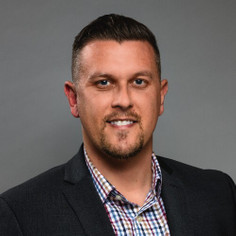Key Findings from the “Leveraging Technology and Workflow Automation to Prevent Staff Burnout” Webinar

Misty Reid, chief nursing officer at EmpRes Healthcare
On October 27, I Advance Senior Care hosted a webinar titled, “Leveraging Technology and Workflow Automation to Prevent Staff Burnout.” Sponsored by Accushield, the webinar featured presenters Misty Reid, chief nursing officer at EmpRes Healthcare, and TK King, vice president of healthcare strategy at Accushield.
Key Findings From the Webinar
The webinar focused on the value that automation and technology offer to senior care settings, and how they can help senior care organizations successfully manage workflows, processes, and applications while also keeping residents safe and providing quality care. Reid shared insight into how EmpRes used technology and automation to address some of the challenges they faced, helping to prevent staff burnout while delivering an improved resident experience.
Existing Strain on the Healthcare System
King shared some eye-opening statistics about the challenges and strain facing healthcare workers. He noted that, according to a survey performed by Mental Health of America last year, 93% of healthcare workers were experiencing stress, 96% reported experiencing anxiety, 77% were feeling frustration, 76% were exhibiting exhaustion and burnout, and 75% were feeling overwhelmed.
While many of those numbers can be attributed, at least partially, to the strain of the pandemic, the national shortage of healthcare workers is poised to add to the strain. King noted that more than 500,000 registered nurses are anticipated to retire this year, and 1.1 million new registered nurses are needed this year to meet the population’s health needs. Within the next five years, the country will face a projected national shortage of more than three million low-wage healthcare workers (certified nursing assistants, medical technicians, etc.).
Factors Contributing to Staff Burnout

TK King, vice president of healthcare strategy at Accushield
King noted that several factors contribute to staff burnout:
- Documentation requirements in electronic health record programs
- Lack of tools and solutions like technology
- Compliance fatigue
- The number of technology programs in use, including programs that create duplicate processes and unnecessary tasks.
He explained that many other factors also contribute to staff burnout, including elements of an employee’s personal life.
Reid echoed King’s sentiments, noting that many factors contribute to burnout, but that compliance fatigue is a major challenge. Changing policies and procedures can confuse and stress staff, adding onto their existing work burden.
Choosing Technology to Support Staff
When choosing technology to support staff, King encourages senior care organizations to look for technology that can improve the employee’s ability to perform the job, while also helping to improve or derive quality outcomes. At the same time, it’s essential that the technology doesn’t cause burden to staff. Good technology should eliminate redundancy, and it should be capable of compliance.
The following questions can help a senior care organization better understand their need for technology:
- Is the technology to improve your care delivery and/or to improve staff workforce solutions?
- What is your primary audience – staff, residents, or a combination of both?
- How will the solution not only meet your current needs, but also anticipate future needs?
- How does the technology adapt to future industry regulations?
- What are the minimum requirements for success – your need-to-haves and like-to-haves?
- What is your budget?
- Do you have leadership buy-in for the technology you’re looking at?
The Value of Automation
Reid discussed how automation has benefitted EmpRes operations and staff. She noted that automation benefits both the operations and corporate levels. Automation supports COVID-19 vaccination and testing, budgeting, and goal setting. EmpRes has used automation to improve quality of care and the overall quality of the organization. The reports that are generated are valuable in assessing the organization’s progress toward goals and identifying improvements needed to help reduce staff burnout.
Learn More
King and Reid went into significant detail about how to choose and use technology to improve staff support and the resident experience. If you would like to learn more about the best practices and advice shared during the webinar, you can find a recording and transcript online. We have also made the presentation slides available to be downloaded.

Paige Cerulli is a contributing writer to i Advance Senior Care.
Related Articles
Topics: Featured Articles , Information Technology , Policy , Technology & IT











